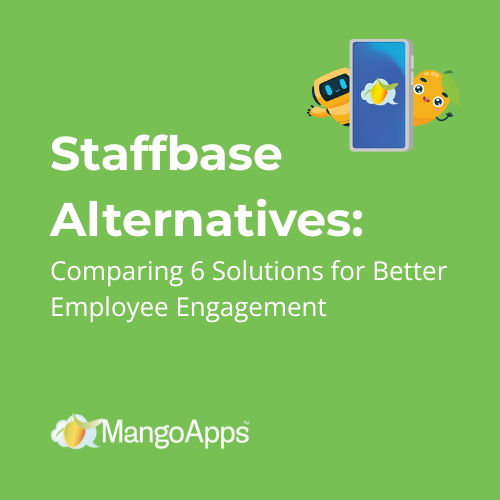
For decades, companies have struggled to keep up with their employees’ data needs. For an enterprise file repository to be useful, it has to be easy to understand what information it contains, and find a specific file quickly. Continual improvements in search engine technology over the last decade or two have made this easier and easier to achieve, but only for companies that have invested in keeping up with that technology.
Many organizations are still using the file repositories of yesteryear, making it an uphill battle to ensure that their employees are able to find things without friction. Using these search functions effectively requires at least a basic knowledge of how to frame your queries, which necessitates explicit training for many employee bases.
With the advent of generative AI, though, this equation has changed. Now, it is very easy to create an enterprise search bar that understands natural language and can answer any question about the information your file repository contains, and then point the user to the files where they’ll find additional context and information. Further, you don’t need to overhaul your tech stack to make this happen—it can be grafted on top of whatever you’ve got.
In this article, we will detail many of the challenges of a traditional search experience and how you can solve them by leveraging MangoApps AI Assistants, powered by NLP and generative AI and designed to fit into your tech stack without requiring a large effort to deploy.
For other AI use cases, see our guides to employee self-service assistants and knowledge harvesting.
The Stagnation of Traditional Search
The landscape of enterprise search has long been mired in inefficiency, acting as a silent drain on resources and a barrier to organizational agility. Traditional search mechanisms, characterized by their reliance on manual navigation through extensive databases, files, and email chains, have not only persisted but have also entrenched themselves deeply within the operational fabric of many organizations. This stagnation in the evolution of enterprise search presents numerous challenges and missed opportunities, particularly in terms of employee productivity, engagement, and the integration of low-tech and frontline workers into the digital ecosystem.
At the core of the issue is the sheer volume of time and energy employees must invest in searching for information. Studies and surveys consistently highlight that employees spend a significant portion of their workweek—sometimes as much as 20%—just trying to find the information they need to perform their tasks effectively. This translates into a considerable loss in productivity, with the added frustration of often not finding the necessary information. For organizations, this inefficiency represents a dual loss: the direct impact on productivity and the opportunity cost of not utilizing employees' time on more value-adding activities.
Beyond the tangible costs, the traditional search experience fosters a work environment mired in frustration and inefficiency. The process of sifting through disorganized and outdated information sources can lead to a significant drop in employee morale. When employees cannot find the information they need, their engagement with their work diminishes, as does their overall job satisfaction. This can lead to a higher turnover rate, increased recruitment costs, and a decline in the overall workplace atmosphere.
Missed Opportunities for Collaboration and Innovation
The inability to efficiently locate expertise within an organization is another critical missed opportunity, especially for large distributed teams. In the digital age, where collaboration and innovation are key drivers of business success, the traditional search experience acts as a roadblock. When employees can't easily find colleagues with the specific skills or knowledge needed for a project, the potential for cross-functional collaboration and innovation diminishes. This not only impacts project outcomes but also stifles the growth of a culture of collaboration and continuous improvement.
For low-tech and frontline workers, the challenges are even more pronounced. These employees, often not provided with the same level of digital tools and training as their office-based counterparts, are further marginalized by traditional search systems. The reliance on complex file systems and digital tools that require significant tech-savviness excludes a significant portion of the workforce from accessing vital information. This digital divide within organizations exacerbates inequities and hinders the full realization of a cohesive, informed, and agile workforce.
The persistent stagnation of traditional search experiences represents a significant hurdle to organizational efficiency, innovation, and inclusivity. Addressing this challenge through the adoption of advanced AI-driven search technologies can unlock immense potential, bridging the gap between where organizations are and where they need to be in the digital era.
The Rise of Conversational AI in Search
With the integration of conversational AI into search functionalities, the landscape of information retrieval is undergoing a transformative shift. Leveraging the capabilities of NLP, this advanced AI technology can parse and interpret human language with a remarkable degree of nuance, facilitating interactions with data repositories through conversational exchanges. Users can now query databases and directories using colloquial language, vastly simplifying the search process by eliminating the need for complex query syntax.
This progression in search technology accelerates the retrieval process, aligning it more closely with instinctive human communication patterns. The efficiency of conversational AI in understanding context, intent, and even subtleties in language means that searches are not just faster but also more accurate, delivering relevant results with a precision previously unattainable with traditional search methodologies.
The implementation of conversational AI in search is more than an upgrade; it's a redefinition of how we interact with digital information systems. The implications for productivity and user experience are profound, marking a significant leap forward in making technology more accessible and intuitive for every user, irrespective of their technical proficiency.
Where MangoApps Fits In
There are many vendors in the market right now pushing all sorts of pie-in-the-sky promises around generative AI. While it’s true that this technology is revolutionizing many facets of our daily lives and how we interface with technology, many of the advancements that companies advertise are either impractical for most companies to implement, not fully realized yet, or unlikely to ever actually come to fruition.
At MangoApps, we work closely with customers in industries like healthcare, manufacturing, and retail, and keenly understand that most companies do not have the high-tech workforce that many software companies do. As such, we have built our AI Assistants around a simple philosophy: they should be easy to use for non-technical employees, easy to implement and manage without a ton of IT resources, possible to leverage with almost no prerequisites, and, most importantly, affordable.
This approach has led to the development of AI Assistants for enterprise search. With MangoApps AI Assistants, you can give your employees a simple interface within which they can ask questions in natural language, and the answers will be surfaced alongside links to the file or policy that has additional context and information. The end user sees specific purpose-built AI Assistants that include default prompts to help them understand exactly what they should use this assistant for.
On the back end, there are several premade assistants for specific purposes, such as the People Finder, which is trained on your employee directory and can answer any question about your workforce. It is also easy to design your own assistants with specific prompts for your users, and restrict assistants to specific cohorts of your users.
The Power of RAG Technology
Underpinning MangoApps' AI Assistants is the Retrieval Augmented Generation (RAG) technology, which enhances the accuracy and relevance of the information provided by these assistants. By training AI models on a company's specific data, RAG minimizes the risk of incorrect information and significantly boosts operational efficiency. This ensures that the outputs from AI Assistants are relevant and tailored to the unique context of the business.
Furthermore, this enables you to maintain data security, as your data never leaves your instance. You also get back valuable reporting and data on how the AI Assistants are being used, allowing you to improve the program over time. These functions stand in stark contrast to most of the solutions on the market today, which are not designed for use in a traditional enterprise environment, and give you no reporting or security.
Transforming the Workplace with MangoApps AI
MangoApps' suite of AI solutions ensures that every employee, regardless of technical proficiency, can benefit from AI's capabilities.
The adoption of conversational enterprise search, powered by platforms like MangoApps, represents a significant leap forward in making the workplace more efficient, informed, and collaborative. As businesses continue to embrace AI and its applications, the way we interact with information is bound to become even more seamless, intuitive, and conversational. The future of enterprise search is here, and it speaks our language.
Read more about the dangers of unregulated Generative AI in the workplace or how to use AI to build personalized employee experiences.










